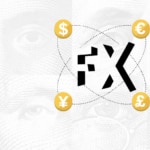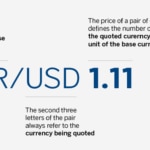The foreign currency market: What it is and how it works
The foreign currency or foreign exchange market is a decentralized worldwide market in which currencies are traded. It was created in order to facilitate the flow of money derived from international trade. Today, it is the world's largest financial market, with an average daily volume of about $5 trillion, and is undergoing an important and growing “electronification.”

Also known as the Foreign Exchange or FX market, it is basically an unorganized, or Over The Counter (OTC) market.
Unlike the stock exchanges, which are organized and have a clearing house, the currency market is unregulated, free, and private; no institution acts as an intermediary between the parties to guarantee that they comply with the obligations both have acquired. Each transaction is closed with a private contract between the parties.
The foreign currency market functions 24 hours a day for 5.5 days a week, opening on Sunday afternoon and closing on Friday, along with the New York market.
As it is a fundamentally unorganized market, the forex market has a large number of operations centers around the world. Among the most important are Tokyo, Singapore, Sidney, Hong Kong, Bahrein, London, Frankfurt, Zurich, New York, Chicago and Toronto.

The FX market is known for its great variety of participants
These range from central banks to private individuals, and for the large number of currencies that are traded. Among them, the most representative is the U.S. dollar, the currency in which more than 60% of the reserves held by the world´s central banks is denominated. The dollar is followed by the euro, the money in which 24% of the world´s international reserves are denominated. The Japanese yen and the British pound account for 5.4% and 5.6%, respectively.
In general, we can differentiate between the currency market and the banknote market; the first refers to the market for trades between financial institutions or between financial institutions and companies or institutions (it is also known as the wholesale market). The second refers to the exchange of physical notes that takes place in banking institutions or exchange houses, basically to satisfy the needs of people who are travelling to a country whose currency is different from their own (domestic money is exchanged for foreign money).
The principal functions of the currency market or exchange market are the following:
- To set the prices of some currencies with respect to others (currency pairs). That is, to define the number of units of one currency to be handed over in exchange for one unit of a different currency.
- To allow for the realization of currency risk coverage, for example, when investments are made in another currency.
- To favor the exchange of funds between different countries; we can find countries with excess liquidity and others that need liquidity.
- To finance international trade, whose transactions represent a significant part of the currency market.
Currencies are identified by a three-letter code (ISO 4217) and currency pairs are identified by a six-letter code. For example, the dollar with respect to the euro:
- The first three letters always refer to the base currency (EUR).
- The second three letters of the pair always refer to the currency being quoted (USD).
- The price of a pair of currencies defines the number of units of the quoted curerncy (X$) per unit of the base currency (1€).

A great variety of currencies are traded in the currency market.
These currencies are usually grouped as provided below for ease of identification and reference:
- G-10 currencies; made up by the world’s most representative currencies (USD-Dollar, EUR-Euro, GBP-British Pound, JPY-Japanese Yen, CAD-Canadian Dollar, CHF- Swiss Franc, AUD-Australian Dollar, NZD- New Zealand Dollar, SEK- Swedish Krone and NOK- Norwegian Krone).
- Emerging currencies; including the Polish Zloty (PLN), the Czech Crown (CZK), the Mexican Peso (MXN), the Hungarian Forint (HUF), the South African Rand (ZAR) and the Russian Rubble (RUB).
- Middle East currencies; such as the Israeli Shekel (ILS), the Egyptian Pound (EGP), the Saudi Riyal (SAR), the Hong Kong Dollar (HKG) and the Chinese Yuan (CNH).
- “Commodity” currencies; such as the Canadian Dollar (CAD), the Australian Dollar (AUD), the Colombian Peso (COP), the Peruvian Sol (PEN), the Brazilian Reais (BRL), the Chilean Peso (CLP) or the Norwegian Krone (NOK).